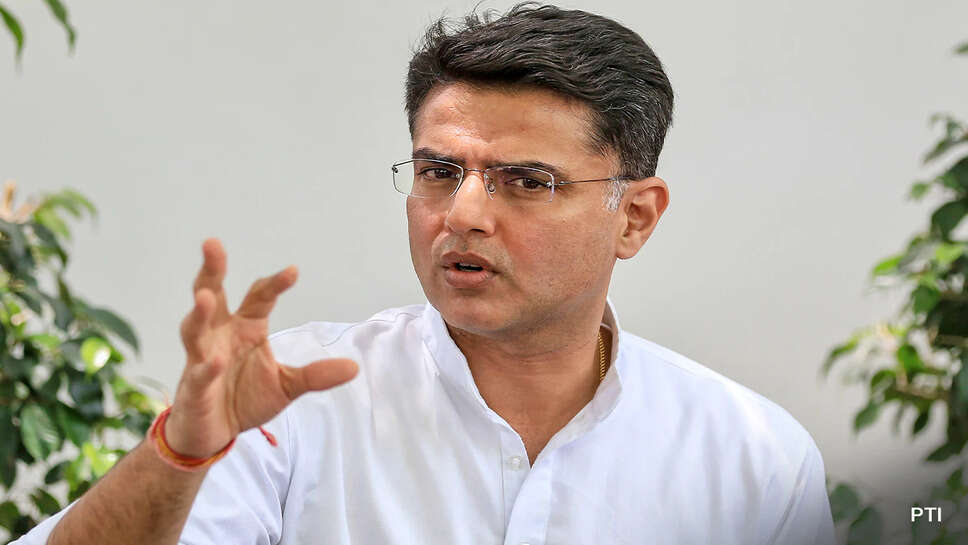Sachin Pilot and Ashok Gehlot Bury the Hatchet in Dausa

A Delicate Gesture of Reconciliation
In the wake of the 25th death anniversary tribute to veteran leader Rajesh Pilot, Sachin Pilot's invitation to Ashok Gehlot marks more than a ceremonial gesture—it carries the weight of a potential truce in Rajasthan’s often fractious Congress politics. This comes soon after Sachin visited Gehlot’s Jaipur residence, personally inviting him to the Dausa ceremony—an extraordinary move after years of hostile rivalry
Gehlot, a senior leader and three-time chief minister, responded graciously. He not only attended but praised Rajesh Pilot—highlighting their shared journey since the 1980 Lok Sabha election—through social media, emphasizing longstanding mutual respect .
Politically significant? Undeniably. Analysts and senior party insiders view this interaction as a possible prelude to a larger reconciliation: an attempt to move past the 2020 rebellion and reset Congress’s fortunes in Rajasthan .
2. The Underlying Rift: A Recap
To appreciate today’s overture, we need to revisit the conflict’s origin:
-
2018: Sachin, then state PCC president, galvanized the Congress to victory yet watched from the sidelines as Gehlot was installed chief minister. Pilot instead became Deputy CM—a move perceived by many as deliberately marginalizing him.
-
July 2020: The disagreement erupted into open revolt. Sachin led 18 MLAs to Delhi, challenging Gehlot’s leadership, alleging misuse of authority, and demanding greater inclusion. Gehlot retaliated with accusations of betrayal and dismissed Sachin from his positions.
-
Aftermath: A tense but fragile détente followed. Central leaders, including Rahul Gandhi and Mallikarjun Kharge, brokered a resolution in August 2020—but distrust lingered
Since then, relations remained distant. Despite sporadic reconciliation attempts—for instance during the 2023 crisis when Pilot supported Gehlot’s son—there was little evidence of full thaw
3. Why Now? Timing Is Everything
A series of developments sets the stage for this moment:
-
Rajesh Pilot’s anniversary: A moment of emotional significance. As Gehlot emphasized, he and Sachin’s father shared a long political partnership—this emotional chord may have softened hard lines
-
Electoral urgency: Rajasthan’s Congress is struggling under current BJP governance. With state and Lok Sabha polls in sight, the leadership realizes disunity feeds anti-incumbency. A united front under shared veteran figures could bolster morale and discipline .
-
Top-down nudges: AICC leadership, from Kharge to Rahul Gandhi, has pushed both leaders to "forgive and forget"—emphasizing collective leadership as essential for winning elections
4. What to Watch in Dausa’s Ceremony
The tribute event in Dausa on June 11 will be pivotal in testing whether this new-leaf moment is substantive:
-
Joint presence: Will Sachin and Gehlot appear together on stage? A shared tribute would not simply be symbolic—it would send a strong signal of renewed collaboration.
-
Public tone: What will be said from their podiums? If they consciously avoid emphasis on past conflict and speak of unity, it would indicate a genuine rapprochement.
-
Media and photo-op dynamics: Images of friendly handshakes, interactions, or shared booths could effectively communicate solidarity to Congress workers and voters alike.
-
Broader cadre reaction: Even if the top leadership seems unified, will local workers and MLAs from both camps respond positively, or will old allegiances divide them?
5. Potential Outcomes
We can think of three possible scenarios post-Dausa:
A. Symbolic Reconciliation
-
The two leaders appear together, exchange pleasantries, but quickly retreat into their respective camps.
-
The outcome may reduce acrimony but lacks organizational integration or strategic clarity.
-
Congress supporters appreciate the gesture, but frustration may linger if it doesn't translate into actionable unity.
B. Strategic Alliance
-
The ceremony kicks off deeper coordination: joint campaigning, shared candidate selections, or public-facing collaborations.
-
May lead to more cohesive messaging in upcoming elections, potentially improving Congress’s standing against BJP.
-
Could involve negotiations over power-sharing, ministerial roles, or organizational leadership.
C. Superficial Truce
-
A temporary calm covers deeper unresolved issues. After the tribute, old mistrust resurfaces as political differences remain.
-
Risk of reigniting old fault lines—particularly as key decisions (candidate announcements, alliances) loom on the horizon.
6. Long-Term Implications
For Congress in Rajasthan:
A genuine alliance could break the cycle of one-term governance, restore morale, and harness the strengths of both factions. Gehlot offers experienced grassroots leadership; Sachin brings reformist energy and appeal among younger voters. Together, they could form a formidable combination—if they manage to cooperate effectively.
But if differences persist, the fractures could be re-exposed—jeopardizing electoral prospects and internal morale, much like seen in prior crises.
For National Party Dynamics:
Rajasthan is one of the Congress’s largest state units. A successful reconciliation would strengthen the party’s image nationwide, demonstrating its ability to resolve internal feuds. For central leadership under Kharge and Rahul Gandhi, stabilizing Rajasthan is strategically vital going into next general elections.
However, a relapse of conflict could embolden BJP’s criticism that Congress is riddled with infighting—a narrative likely to be exploited during campaigns.
For BJP in Rajasthan:
A united Congress poses a sharper challenge to BJP’s hold. Internal discord helps the ruling party—which would prefer to face a weaker opposition. Thus, from BJP’s perspective, this reconciliation would complicate their electoral calculus.
7. Key Determinants to Watch
| Factor | Why It Matters |
|---|---|
| Joint stage presence | Credibility of reconciliation |
| Public statements | Tone sets the course—cooperation vs polite distance |
| Follow-up actions | Shared campaign events, strategy meetings |
| Cadre coordination | Unity must extend beyond top leaders |
| Central leadership’s role | Continued support from Gandhi and Kharge adds weight |
8. Will They Bury the Hatchet?
At its core, this moment in Dausa offers a rare chance to reset. The invitation, acceptance, joint tribute—these are early signs of thawing relations. Whether this translates into a lasting political alliance depends on consistency, shared objectives, and organizational follow-through.
Sachin Pilot’s gesture is deliberate and tactful—personal, respectful, and clear in intent. Gehlot’s acceptance and public tribute reciprocate that gesture. This is a stark contrast to past years of rivalry. Both recognize the political stakes, and their willingness to engage, even briefly, shows a mutual interest in unity.
Yet real reconciliation needs far more than a tribute. It requires a sustained program of cooperation: open communication, joint outreach, coordinated planning, and conflict resolution mechanisms—it demands structure and accountability.
9. Final Take
The real story today is not what’s already happened—but what could happen next:
-
Dausa may mark the turning point—or be remembered as a fleeting goodwill moment.
-
Piloted well, this could spark hope for a unified Congress ready for the electoral test.
-
Otherwise, it may defuse tensions temporarily but leave the underlying rift intact—waiting for the next trigger.
Dausa is a crossroads—offering a moment for healing or a prelude to recrimination. The real test of unity lies in what happens after the tribute.
